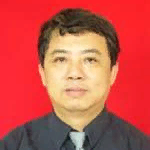
Xiaofeng Lin
Work place: School of Electrical Engineering, Guangxi University, Nanning 530004, China
E-mail: gxulinxf@163.com
Website:
Research Interests: Programming Language Theory, Control Theory, Computer systems and computational processes
Biography
Xiaofeng Lin was born in Guangxi, China, in 1955. He grad-uated from Guangxi University in electrical engineering and automation major in 1979. He is currently an Professor with the school of Electrical Engineering, Guangxi University, China. His res-earch fields include intelligent control, process control, and computational intelligence. His latest research is in-telligent optimal control, and adaptive dynamic programming. Prof. Lin is a member of IEEE of Computational Intelligence Society and member of China Intelligent Automation Commission.
Author Articles
Optimal Control for Industrial Sucrose Crystallization with Action Dependent Heuristic Dynamic Programming
By Xiaofeng Lin Heng Zhang Li Wei Huixia Liu
DOI: https://doi.org/10.5815/ijigsp.2009.01.05, Pub. Date: 8 Oct. 2009
This paper applies a neural-network-based approximate dynamic programming (ADP) method, namely, the action dependent heuristic dynamic programming (ADHDP), to an industrial sucrose crystallization optimal control problem. The industrial sucrose crystallization is a nonlinear and slow time-varying process. It is quite difficult to establish a precise mechanism model of the crystallization, because of complex internal mechanism and interacting variables. We developed a neural network model of the crystallization based on the data from the actual sugar boiling process of sugar refinery. The ADHDP is a learningand approximation-based approach which can solve the optimization control problem of nonlinear system. The paper covers the basic principle of this learning scheme and the design of neural network controller based on the approach. The result of simulation shows the controller based on action dependent heuristic dynamic programming approach can optimize industrial sucrose crystallization.
[...] Read more.Other Articles
Subscribe to receive issue release notifications and newsletters from MECS Press journals